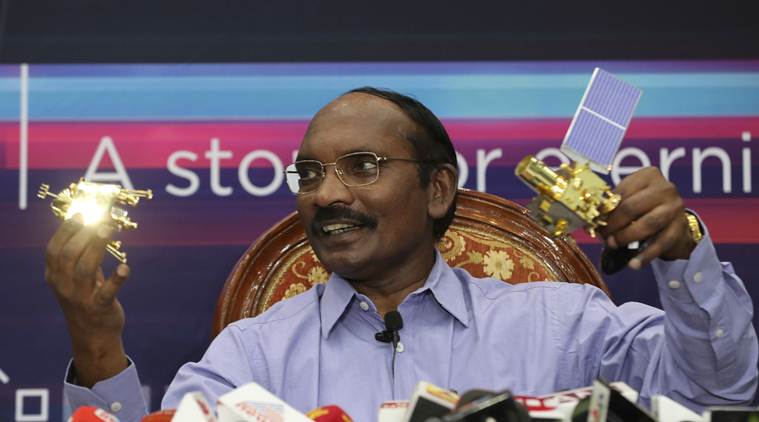
Nearly 24 hours after mission control lost contact with the Vikram lander, there was no clear statement from the Indian Space Research Organisation (ISRO) on the fate of the module that likely fell on the Moon’s surface in an uncontrolled fashion after failing to slow down sufficiently in its descent.
ISRO issued a statement Saturday to emphasise that the Chandrayaan-2 mission was still on, and had a lot of science left in it, despite the setback. The statement threw no light on what could have happened to the lander, except for saying that communication with it had been lost.
Read | Chandrayaan-2: The men and women behind India’s Mission Moon
In an interview given to Doordarshan, ISRO chairman K Sivan said attempts to re-establish contact with the lost lander would continue for the next two weeks. Another ISRO official told The Sunday Express that it was possible that contact with the lander is re-established.
“We have not given up hope as yet. It is premature to assume that the lander hit the Moon’s surface with great speed and got destroyed in the process. In fact, there are good chances that it might not have been destroyed,” this ISRO official said.
This, the official said, was because when contact was lost, the lander was still decelerating. “Maybe not at the rate it was required to decelerate at, but the speed was indeed coming down. So while it would most probably have not attained a suitable low speed to enable a safe landing, it is possible that it came down to a speed at which an impact would not totally destroy it,” the official said.
An expert explains: 10, 9, 8… in the end, it was the 7 terrifying minutes
At the time contact was lost, the lander was moving at about 60 metres per second, having been slowed down from its initial velocity of about 1,680 m/sec. To make a smooth landing, its speed was supposed to have been brought down to about 2 m/sec; it was designed to withstand the impact of a touchdown at upto 5 m/sec.
“It is indeed possible that the lander module is lying on the Moon’s surface intact. It cannot be deployed, and cannot be used the way it was planned, but it is possible that contact can be re-established. All efforts are being made to do this,” the ISRO official said.
He said that the Orbiter module, which is moving in a near circular orbit of 100 km around the Moon, could be deployed to search for Vikram using its cameras and other instruments on board.
Another scientist, an astrophysicist who is not from the ISRO community, agreed that the Orbiter was indeed in the best position to look for the lander.
“What we all saw is that at the time we lost contact, Vikram was not decelerating as fast as it should have. This means it would have gone on to hit the Moon’s surface not at 2 metres per second as desired, but maybe 20 or 30 metres per second. Since we lost contact, we don’t know the exact speed,” this scientist said.
He pointed out that what happened to Vikram would depend on the speed of the impact.
“It was supposed to withstand a maximum shock of landing at a speed of 5 metres per second. So, at any speed higher than that, it would not have been able to balance itself vertically… As of now, there is no way to know whether it lies intact, or has been partially or totally destroyed as a result of the hard landing. What is clear is that if it is not standing erect, the rover would not be able to come out of it,” the scientist said.
It was much more difficult, the scientist said, to tell why Vikram failed to stick to its prescribed deceleration profile. “Maybe one or more thrusters did not work properly. But they were apparently working properly for the first 13 minutes of the descent, because that part of the journey was made perfectly. So something could have happened midway. Only a detailed scientific investigation would be able to diagnose what went wrong,” he said.
“But it will be sad if Chandrayaan-2 is described as a failure because the lander did not land properly. I would say more than 90 per cent of the science is still intact in this mission and we must not ignore that,” the scientist said.